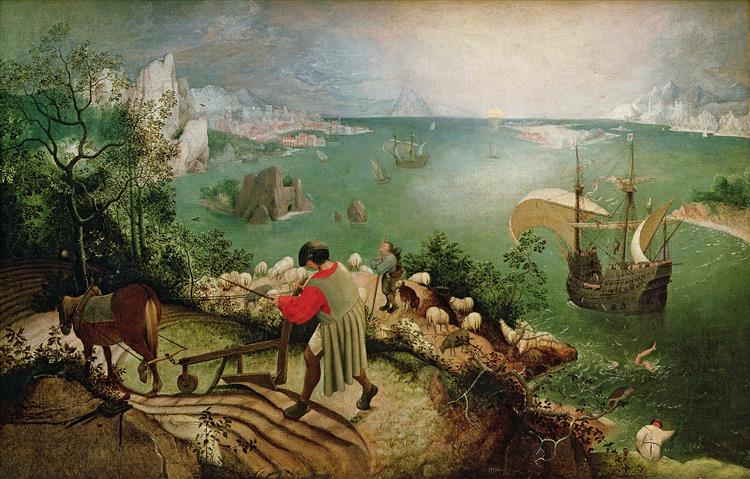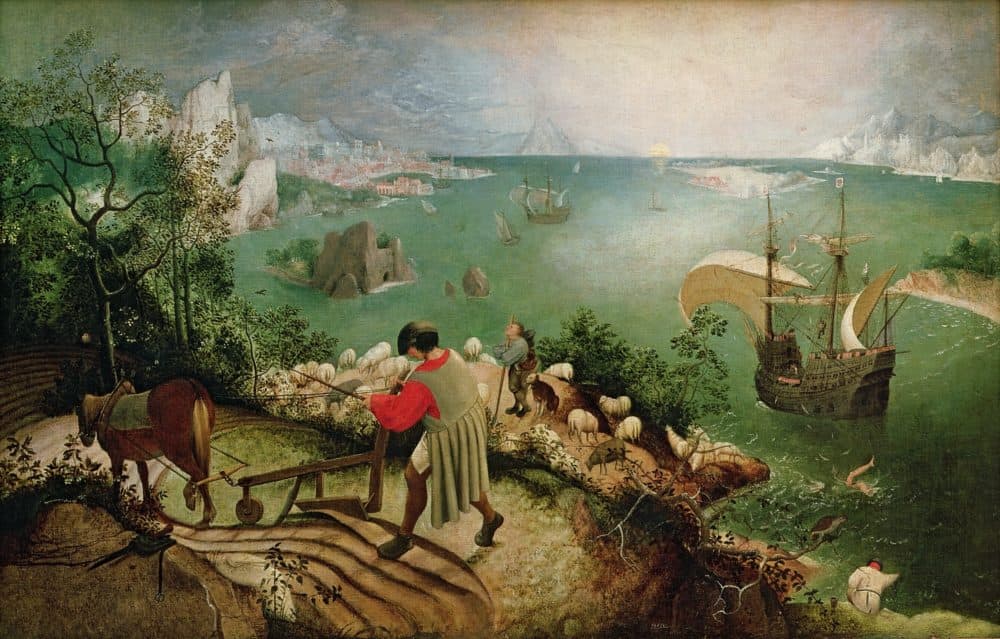the fall of icarus painting
Fall of Icarus by Bruegel was a painting which was subjected to intensive scrutiny by art academics who wanted to prove who was the original creator of this painting. The work was carried out in 1996 and conclusions were drawn that it was unlikely to have been from Pieter Bruegel’s own hand though with no other artist being linked to it, Fall of Icarus will probably still remain within his portfolio for years to come.
Landscape with the Fall of Icarus has a slightly inaccurate balance between the character in the foreground and the background ships with the sizes not entirely what you would expect from such a skilled artist. Many believe however that this was a deliberate ploy by the artist to strengthen the power of the focal points of the work, and artistic license is an accepted element to many successful oil paintings right across art history.

a farmer was ploughing
his field
the whole pageantry
All this is ‘unsignificant’.
John Sutherland describes the painting as
Landscape with the Fall of Icarus is described in W H Auden’s famous poem Musée des Beaux-Arts , named after the museum in Brussels which holds the painting.

The ploughman, shepherd and angler are mentioned in Ovid’s account of the legend; they are: “astonished and think to see gods approaching them through the aether”, which is not entirely the impression given in the painting. The shepherd gazing into the air, away from the ship, may be explained by another version of the composition (see below); in the original work there was probably also a figure of Daedalus in the sky to the left, at which he stares. There is also a Flemish proverb (of the sort imaged in other works by Bruegel): “And the farmer continued to plough. ” (En de boer . hij ploegde voort”) pointing out the ignorance of people to fellow men’s suffering. The painting may, as Auden’s poem suggests, depict humankind’s indifference to suffering by highlighting the ordinary events which continue to occur, despite the unobserved death of Icarus.
Largely derived from Ovid, the painting is described in W. H. Auden’s famous poem “Musée des Beaux-Arts”, named after the museum in Brussels which holds the painting, and became the subject of a poem of the same name by William Carlos Williams, as well as “Lines on Bruegel’s ‘Icarus'” by Michael Hamburger.

About suffering, they were never wrong,
The old Masters: how well they understood
Its human position: how it takes place
While someone else is eating or opening a window or just walking dully along…
In Brueghel’s Icarus, for instance: how everything turns away
Quite leisurely from the disaster; the ploughman may
Have heard the splash, the forsaken cry,
But for him it was not an important failure…
Resources:
http://ancientrecipes.wordpress.com/2018/02/28/the-fall-of-icarus-strike-diary-5/
http://www.bl.uk/collection-items/landscape-with-the-fall-of-icarus
http://www.wikiart.org/en/pieter-bruegel-the-elder/landscape-with-the-fall-of-icarus-1560
http://www.wbur.org/artery/2018/12/05/pieter-bruegel-fall-of-icarus
http://www.bl.uk/collection-items/landscape-with-the-fall-of-icarus
